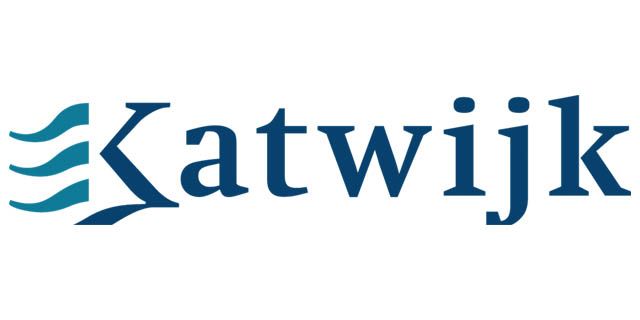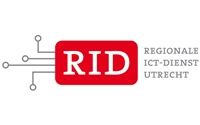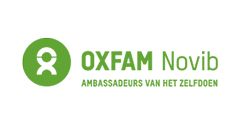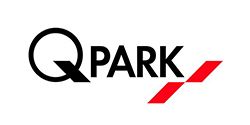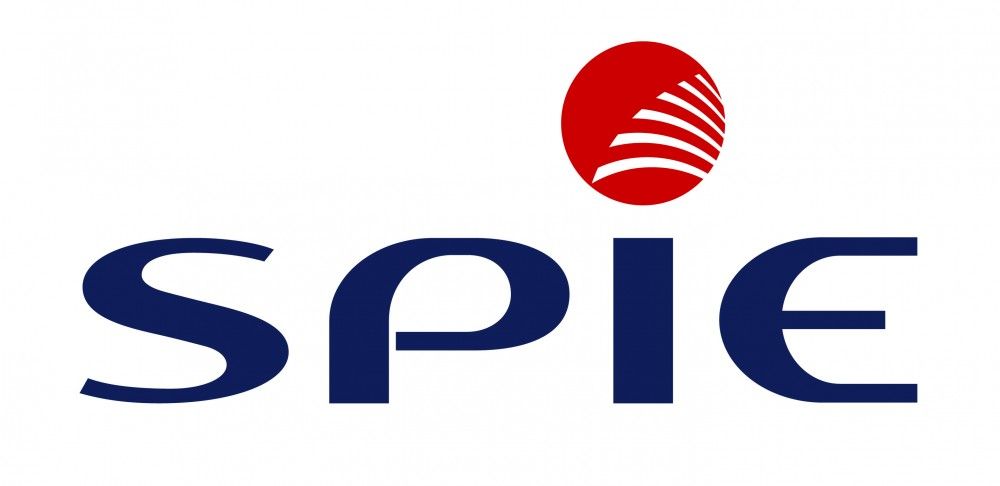Cursusbeschrijving
This course teaches IT professionals how to plan, deploy, configure, and administer a Microsoft Skype for Business 2015 solution. Students will learn how to deploy a multi-site and highly available Skype for Business infrastructure that supports instant messaging, conferencing, persistent chat, archiving, and monitoring. Students will also learn how to manage, maintain, and troubleshoot issues in the infrastructure. This course focuses primarily on the on-premises deployment of Skype for Business, but does include information on how to integrate the on-premises deployment with Skype for Business Online as well as how to migrate from previous versions of Lync Server.
{tab Doelgroep}
This course is intended for IT professionals who are responsible for the Skype for Business deployment in their organizations. Experience with previous versions of Lync Server is beneficial but not required to take this course. Students should be proficient with Active Directory Domain Services, data networks, and telecommunications standards and components that support the configuration of Skype for Business. Students should also be familiar with Exchange Server and Office 365.
Also, IT professionals who are looking to take the exam 70-334A: Core Solutions of Skype for Business 2015, as a stand-alone, or as part of the requirement for the MCSE: Communications certification will take this course as preparation material.
{tab Voorkennis}
In addition to their professional experience, students who attend this training should already have the following technical knowledge:
- Minimum of two years of experience administering Windows Server, including Windows Server 2008 R2 or Windows Server 2012
- Minimum of two years of experience working with Active Directory
- Minimum of two years of experience working with name resolution, including DNS
- Experience working with certificates, including PKI certificates
- Experience working with Windows PowerShell
- Understanding of data networks and telecommunications standards and components
{tab Certificering}
Deze cursus is de voorbereiding voor het examen 70-334 de Core Solutions of Microsoft Skype for Business 2015
{tab Vervolgcursussen} M20337 Enterprise Voice and Online Services with Microsoft Skype for Business (updated to cover 70-333) {tab Overige informatie}
This course will be delivered with digital courseware. In order to have the best learning experience you are asked to bring your own second screen to view the courseware. A second screen includes: tablets and laptops.
{/tabs} {slider Cursusinhoud|closed}
Module 1: Designing the Skype for Business 2015 Topology
This module describes the high level components and features of Skype for Business 2015 and the purpose of the various Skype for Business administrative tools. It also explains the main components of Skype for Business Online and coexistence with on-premises Skype for Business Servers.
- Skype for Business 2015 Overview
- Skype for Business Administrative Tools
- Skype for Business Online
Lab : Designing and Publishing a Skype for Business 2015 Topology
- Planning the New York Server Deployment
- Updating the Topology
After completing this module, students will be able to:• Describe the high-level components and features of Skype for Business 2015.• Describe the purpose of the various Skype for Business administrative tools.• Describe main components of Skype for Business Online and coexistence with on-premises Skype for Business Servers.
Module 2: Installing and Implementing Skype for Business Server 2015
This module helps you to identify the external dependencies for Skype for Business Server 2015. It also explains how to plan SIP domains to ensure a successful implementation. Further, it describes how to install Skype for Business Server 2015 and how it integrated with Exchange Server and SharePoint Server.
- Server and Service Dependencies
- Planning SIP Domains
- Installing Skype for Business Server 2015
- Integrating Skype for Business Server 2015 with Exchange Server and SharePoint Server
Lab : Configuring DNS for Skype for Business 2015
- Creating DNS Records
Lab : Deploying Skype for Business Server 2015
- Installing and Configuring Skype for Business Server 2015
- Installing Skype for Business Certificates
- Configuring Exchange Server Integration
After completing this module, students will be able to:
- Identify the external dependencies for Skype for Business Server 2015.
- Explain how to plan the SIP domains to ensure a successful implementation.
- Describe how to install Skype for Business Server 2015.
- Describe how Skype for Business Server 2015 is integrated with Exchange Server and SharePoint Server.
Module 3: Administering Skype for Business Server 2015
This module explains how to use the Skype for Business Control Panel and Skype for Business Management Shell. It also explains how to create useful Skype for Business scripts and implement Role Based Access Control in Skype for Business. Additionally, this module explains how to use important Test cmdlets and various tools to troubleshoot Skype for Business 2015.
- Skype for Business Control Panel
- Skype for Business Management Shell
- Scripting in the Skype for Business Shell
- Implementing Role Based Access Control (RBAC)
- Using the Test Cmdlets
- Tools for Troubleshooting Skype for Business 2015
Lab : Using Administrative Tools to Manage Skype for Business Server 2015
- Installing the Skype for Business Control Panel on Windows 10
- Using the Skype for Business Control Panel
- Using the Skype for Business Management Shell
Lab : Using Tools to Troubleshoot Skype for Business Server 2015
- Using Command Shell Cmdlets to Create an RBAC Structure
- Using Test Cmdlets
- Capturing an IM Conversation
- Performing a Network Capture by Using Message Analyzer
After completing this module, students will be able to:
- Explain how to use the Skype for Business Control Panel.
- Explain how to use the Skype for Business Management Shell.
- Explain how to create useful Skype for Business scripts.
- Explain how to implement Role Based Access Control in Skype for Business.
- Explain how to use important Test cmdlets.
- Explain how to use the various tools to troubleshoot Skype for Business 2015.
Module 4: Configuring Users and Clients in Skype for Business 2015
This module explains how to configure users for Skype for Business. It also explains how to deploy Skype for Business 2015 clients and configure client policies. It explains the authentication and sign-in process for the clients. It also describes how to configure the server settings that impact Skype for Business and how to generate and distribute the Skype for Business Address Book.
- Configuring Users
- Deploying Skype for Business 2015 Clients
- Sign In, Registration, and Authentication
- Configuring Skype for Business Client Policies
- Configuring Skype for Business Server 2015 Settings
- Managing the Skype for Business Address Book
Lab : Configuring Users and Clients in Skype for Business 2015
- Enabling Users for Skype for Business Using the Management Shell
- Troubleshooting a User Login Issue
Lab : Configuring Policies and the Address Book in Skype for Business 2015
- Configuring Client Policies
- Configuring the Address Book
After completing this module, students will be able to:
- Explain how to configure users for Skype for Business.
- Explain how to deploy Skype for Business 2015 clients.
- Explain the authentication and sign in process for Skype for Business clients.
- Describe how to configure client policies.
- Explain how to configure the server settings that impact Skype for Business.
- Describe how to generate and distribute the Skype for Business Address Book.
Module 5: Configuring and Implementing Conferencing in Skype for Business 2015
This modules explains the features for conferencing in Skype for Business 2015. It also explains how to integrate the Office Web Apps Server with Skype for Business 2015. It then explains how to design and implement simple URLs. Further, it describes the bandwidth requirements of the conferencing codecs and explains how to configure the conferencing settings of Skype for Business Server 2015.
- Conferencing Features and Modalities
- Integrating Skype for Business 2015 with Office Web Apps Server
- Namespace Planning
- Bandwidth Planning
- Configuring Conferencing Settings
Lab : : Installing and Configuring the Office Web Apps Server
- Installing and Configuring the Office Web Apps Server
Lab : Configuring Conferencing in Skype for Business Server 2015
- Configuring Skype for Business Conferencing
- Validating Skype for Business Conferencing
After completing this module, students will be able to:
- Describe the available features for conferencing in Skype for Business 2015.
- Explain how to integrate the Office Web Apps Server with Skype for Business 2015.
- Explain how to design and implement simple URLs.
- Explain the bandwidth requirements of the conferencing codecs.
- Explain how to configure the conferencing settings of Skype for Business Server 2015.
Module 6: Implementing Additional Conferencing Options in Skype for Business Server 2015
This module explains the conferencing lifecycle and the implementation of audio/video and Web conferencing policies. It also explains how to design and configure dial-in conferencing and large and broadcast meetings. It also explains how to configure a Lync Room System.
- Conferencing Lifecycle
- Designing and Configuring Audio/Video and Web Conferencing Policies
- Deploying Dial-in Conferencing
- Configuring a Lync Room System
- Configuring Large and Broadcast Meetings
Lab : Implementing a Conferencing Policy
- Configuring Conferencing Policies
- Troubleshooting Conferencing
Lab : Configuring Additional Conferencing Modalities
- Configuring Dial-In Conferencing
- Configuring a Lync Room System
After completing this module, students will be able to:
- Explain the conferencing lifecycle.
- Explain how to implement audio/video and Web conferencing policies.
- Explain how to design and configure dial-in conferencing.
- Explain how to configure a Lync Room System.
- Explain how to configure large and broadcast meetings.
Module 7: Designing and Implementing Monitoring and Archiving in Skype for Business 2015
This module explains the components of the monitoring service in Skype for Business 2015. It also explains how to design and implement archiving, design an archiving policy, and implement an archiving policy. Additionally, it explains how to implement the archiving of Skype for Business IMs and conferences in Exchange and SharePoint.
- Components of the Monitoring Service
- Implementing Archiving
- Designing an Archiving Policy
- Implementing an Archiving Policy
- Implementing Exchange and SharePoint Integration of Archiving
Lab : Implementing Monitoring
- Enabling Monitoring Reports
Lab : Implementing Archiving
- Experiencing Archiving of an IM Session to Exchange
After completing this module, students will be able to:
- Describe the components of the monitoring service in Skype for Business 2015
- Explain how to design and implement archiving
- Explain how to design an archiving policy
- Explain how to implement an archiving policy
- Explain how to implement the archiving of Skype for Business
- IMs and conferences in Exchange and SharePoint
Module 8: Deploying Skype for Business 2015 External Access
This module explains the modalities for external access and capabilities for remote users. It also explains how to design and implement External Access Policies and security to meet the needs of an organization. Additionally, it explains how to design and manage external network configurations, create and manage reverse proxy configurations, design and manage the mobility service. Further, it explains how to design and configure federation.
- External Access Overview
- Configuring External Access Policies and Security
- Configuring External Access Network and Certificates
- Configuring Reverse Proxy
- Designing Mobility in Skype for Business 2015
- Designing Federation in Skype for Business 2015
Lab : Designing and Implementing External User Access
- Defining the Edge Server in the Topology
- Installing and Configuring the Edge Server
Lab : Installing the Components for External Users
- Installing and Configuring Reverse Proxy
- Troubleshooting External Messaging
After completing this module, students will be able to:
- Describe the modalities for external access and capabilities for remote users
- Explain how to design and implement External Access Policies and security to meet the needs of an organization
- Explain how to design and manage external network configurations
- Explain how to create and manage reverse proxy configurations
- Explain how to design and manage the mobility service.• Explain how to design and configure federation
Module 9: Implementing Persistent Chat in Skype for Business 2015
This module explains how to design a Persistent Chat topology. It also explains how to deploy Persistent Chat and configure and manage Persistent Chat.
- Designing Persistent Chat Topology
- Deploying Persistent Chat
- Configuring and Managing Persistent Chat
Lab : Designing and Deploying Persistent Chat
- Configuring the Topology for Persistent Chat
- Installing Persistent Chat
Lab : Configuring and Experiencing Persistent Chat
- Configuring Chat Rooms and Policies
- Validating the Persistent Chat Deployment
- Troubleshooting Persistent Chat
After completing this module, students will be able to:
- Explain how to design a Persistent Chat topology
- Explain how to deploy Persistent Chat
- Explain how to configure and manage Persistent Chat
Module 10: Implementing High Availability in Skype for Business 2015
This module explains how to configure DNS and hardware load balancing. It also explains how to plan the high availability for back end servers. Further, it describes high availability solutions for the other components of Skype for Business 2015.
- Front End Pool Architecture
- Back End Server High Availability
- High Availability for Other Component Servers
Lab : Designing and Implementing High Availability
- Configuring DNS Load Balancing
- Configuring SQL Always On
After completing this module, students will be able to:
- Explain how to configure DNS and hardware load balancing
- Explain how to plan the high availability for back end servers
- Describe high availability solutions for the other components of Skype for Business 2015
Module 11: Implementing Disaster Recovery in Skype for Business 2015
This module explains the concepts of disaster recovery in Skype for Business 2015. It also explains how to design and implement Pool Pairing and how to plan additional disaster recovery scenarios.
- Disaster Recovery in Skype for Business
- Implementing Front End Pool Pairing
- Other Approaches to Disaster Recovery in Skype for Business 2015
Lab : Designing and Implementing Disaster Recovery
- Configuring Pool Pairing
- Testing the Pool Failover
After completing this module, students will be able to:
- Explain the concepts of disaster recovery in Skype for Business 2015
- Explain how to design and implement Pool Pairing
- Explain how to plan additional disaster recovery scenarios
Module 12: Integrating with Skype for Business 2015
Online This module explains how to design and deploy Skype for Business hybrid.
- Designing Skype for Business Hybrid
- Deploying Skype for Business Hybrid
After completing this module, students will be able to:
- Explain how to design Skype for Business hybrid
- Explain how to deploy Skype for Business hybrid
Module 13: Planning and Implementing an Upgrade to Skype for Business 2015
This module describes the upgrade and migration paths from Lync Server 2010 and Lync Server 2013. It also explains how to upgrade a Lync Server 2013 Pool to Skype for Business 2015.
- Overview of Upgrade and Migration Paths
- Performing an In-Place Upgrade
Lab : Upgrading Lync Server 2013 to Skype for Business 2015
- Performing an In-Place Upgrade of Lync 2013 to Skype for Business 2015.
After completing this module, students will be able to:
- Describe the upgrade and migration paths from Lync Server 2010 and Lync Server 2013.
- Explain how to upgrade a Lync Server 2013 Pool to Skype for Business 2015.
{slider Doelstelling}
- Describe the architecture of Skype for Business 2015 and design a Skype for Business 2015 topology.
- Install and implement Skype for Business Server 2015.
- Administer and manage Skype for Business Server 2015 by using the various available tools.
- Design and implement clients and users in Skype for Business 2015.
- Implement conferencing in Skype for Business 2015.
- Design and implement additional conferencing options.
- Design and implement monitoring and archiving in Skype for Business 2015.
- Design and implement connectivity for external users and organizations.
- Design and implement Persistent Chat in Skype for Business 2015.
- Design and implement high availability in Skype for Business 2015.
- Design and implement disaster recovery scenarios for Skype for Business 2015.
- Design and deploy Skype for Business hybrid.
- Design and implement an upgrade from Lync to Skype for Business 2015.
{/sliders}
Meer weten over dit onderwerp?
Benieuwd naar de mogelijkheden van een cursus? Vraag vrijblijvend meer informatie aan en we sturen je binnen 24 uur meer informatie op over het desbetreffende onderwerp.
